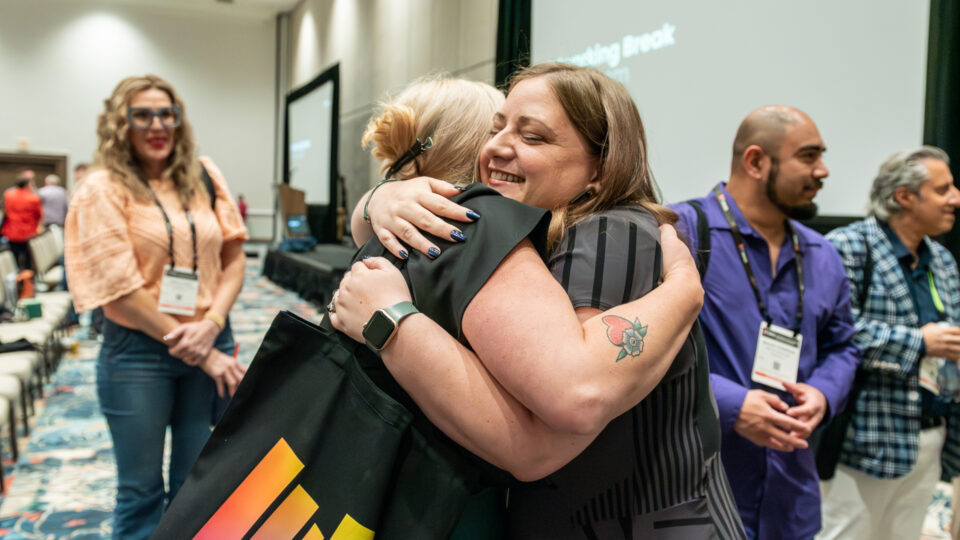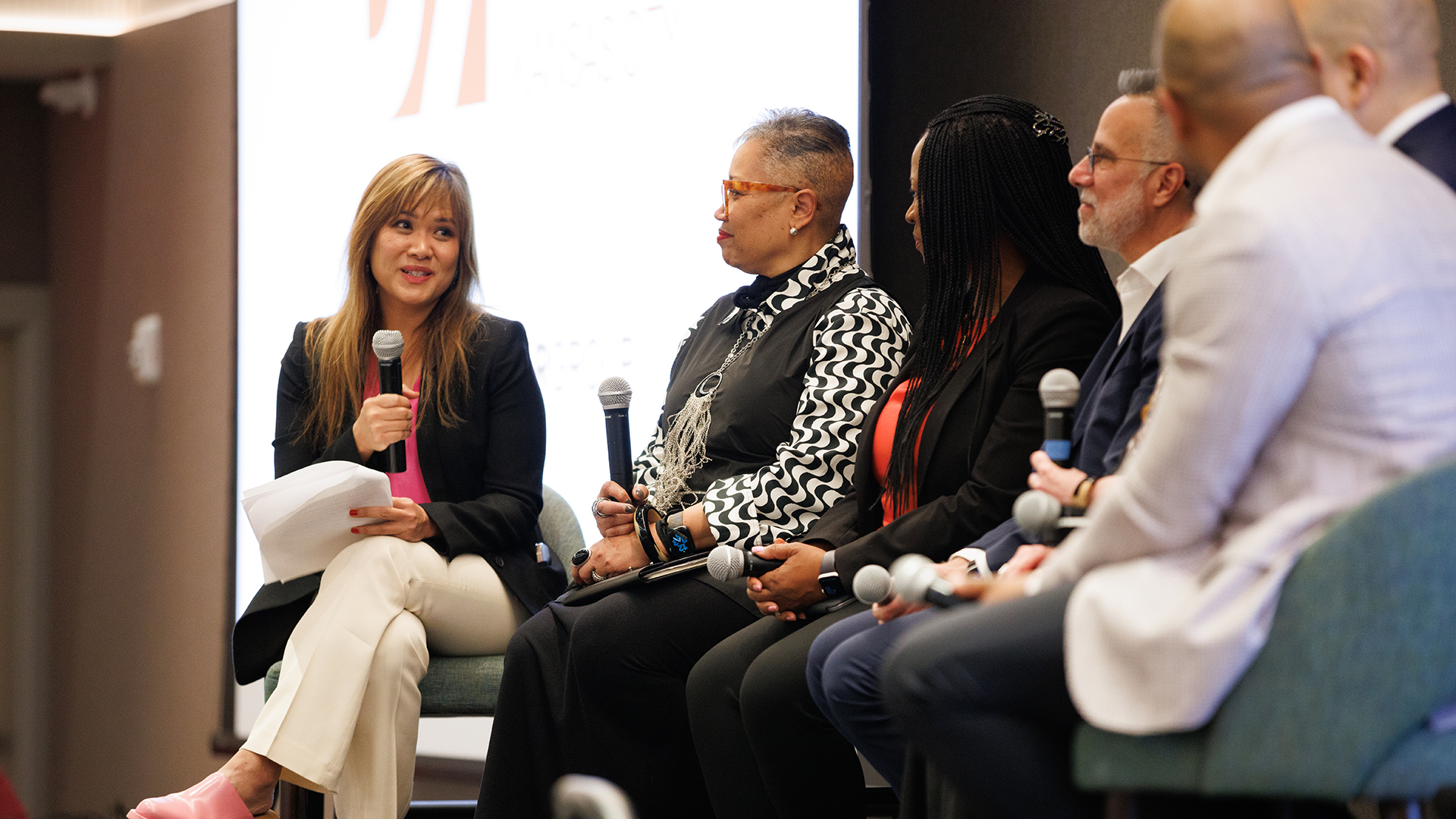Virgil for Wayward Times: On the Service of Experience Designers
This article was written as an introduction to ‘Voices of Experience,’ a new SEGD documentary series filmed and produced by Lorem Ipsum that celebrates the vision, legacy, and impact of SEGD Fellows—honoring the laureates whose work has profoundly shaped the field of experiential design.
Midway through serving on a month-long grand jury panel, I had the idea of rereading The Inferno. I thought the stirring first part of Dante Alighieri’s Divine Comedy could offer a mental escape from the purgatory of being sequestered in a windowless room for days and days, and perhaps, quite perversely, amp the pathos of my present predicament. Right in the first canto, Dante’s account of hell’s entrance—a “savage, rough, and stern forest”—reads like a description of my surroundings. Scanning the New York City courtroom for any humanizing touch—pleather, plexiglass, white lights, off-white walls, off-off-white flooring. There were none.
I thought to myself how much the charged jury room could’ve really used a designer—an experience designer to be exact.
What is experience design exactly?
Of the many design specializations, experience design is arguably the hardest to encapsulate. For one, it challenges the idea that designers must follow one path—graphics, products, interiors, or interfaces, for instance. Experience design, on the other hand, calls for an intermingling of expertise and experts. SEGD defines the practice as the process of transforming “spaces to be more inclusive and intuitive, efficient and engaging, sustainable and shared.” In other words, designers are called not just to produce physical or digital objects; they’re also directly responsible for the immediate impact of their interventions. This requires a range of disciplines, an acuity for nuance, and a particularly inclusive mindset.
And it’s not just America’s judicial infrastructure that needs experience designers. Think about the last time you landed in a new city. How did you feel going through the airport? How was the immigration queue? Or how about your last visit to a doctor’s office, a park, a retail store, or a museum? Did you feel anxious or calm? Small or empowered? As it turns out, our well-being is directly shaped by a concert of elements in our environment such as the architecture, the acoustics, the seating, traffic flow, temperature, even its scent. This is the domain of experience designers. Connecting people to place, and calibrating the emotional journey along the way, is their creative brief and vocation. Their service is akin to Virgil, guiding the Divine Comedy’s pilgrim through the bewildering cycles of hell.
The ever-evolving “E”
It was in 2013 that SEGD’s Board of Directors elected to change the organization’s “e” in its name from “environmental” to “experiential.” Forty years after Rich Burns, John Berry, and Jim Glass thought of creating a design association dedicated to the niche field of wayfinding and architectural signage, SEGD’s leadership recognized that its members were increasingly involved in more complex assignments. The work had expanded beyond choosing fonts, colors, and symbols; it now entailed mastering new technology and methods of display and communication for larger and more diverse audiences.
SEGD Fellows exemplify the highest expression of this work. Nominated by their peers, this distinguished group of practitioners represent “the highest ideals in uniquely different aspects of design, leadership, and influence,” explains Alan Jacobson, chair of the 2024 SEGD Fellow selection jury and 2021 Fellow.
Reading the profiles of the 52 laureates offers a glimpse of the outsize, if oft-overlooked, global impact of experiential designers.

For instance, 1992 Fellow Lance Wyman created the winning brand identity system for the 1968 Summer Olympics as well as wayfinding programs for transport hubs, zoos, and several major museums around the world. The work of 2007 Fellows Chris Calori and David Vanden-Eynden helps thousands of commuters each day make sense of the wild assortment of Amtrak train stations across the US. The duo also created the entire street signage system for Washington, DC. Donald Meeker, a 2015 Fellow, designed a highly legible font used in many American road signs. Clearview, as it’s called, has also been adopted in parts of Brazil, Israel, Panama, the Philippines, and Sri Lanka. Shirin Frangoul-Brückner, 2024 SEGD Fellow and co-founder of the sought-after exhibition design studio Atelier Brückner, demonstrates thrilling ways to engage audiences through interactive productions.

Massimo Vignelli, who was named an SEGD Fellow in 2001, was a titan among graphic designers. Remembered for reckoning with the spaghetti tangle of the New York City subway system, his studio’s work set a new bar for clarity in transport systems worldwide. The late Italian designer, by the way, exemplified an acuity for experience design until his last days. Vignelli’s final act was designing his own funeral service down to the last detail—from the location, the guest list, the seating arrangement, the music, to the nested crematory urns, inscribed in Optima and his beloved Helvetica, of course.

And the legacy of the late 2021 SEGD Fellow Sylvia Harris lies in underscoring the agency designers have in improving the status quo. Her redesign of the U.S. Census ballot and the wayfinding system at NewYork-Presbyterian / Columbia University Irving Medical Center are vital demonstrations of how thoughtful design could make public systems more inclusive.
The S in SEGD
Though much can be said about the “e” in SEGD, arguably the secret sauce of this now 2,200-member strong, 53-year-old organization rests in its “s.” Society—or its commitment to fostering communities for resource-sharing, knowledge exchange, and cross-disciplinary collaborations—has been at the core of its mission.

Bruce Mau tells the story of first discovering SEGD while working on the environmental graphics for Los Angeles’s Walt Disney Concert Hall. “I started as a graphic designer and people just asked me to do weirder and weirder things,” explains Mau, who was named an SEGD Fellow in 2023. He describes how overwhelmed he felt in the face of such a high-profile assignment from his mentor, architect Frank Gehry. “I said, ‘Frank, I haven’t designed a washroom sign.’ I discovered this organization [and] they had all kinds of information on how to do that which I had no experience with… It was one of the few organizations I encountered that actually provided a real utility to the designers.”
Among the most cited SEGD resources are a 1993 white paper titled Accessible Wayfinding and The Universal Symbols for Healthcare, a set of 50 freely available symbols for hospitals and healthcare facilities.
The emphasis on collaboration over competition is a core SEGD trait. Virginia Gehshan, co-founder of the Philadelphia firm Cloud Gehshan, and 2010 Fellow, says it’s not unusual for members to call each other and compare notes on business matters. “We had an interview at Columbia Medical Center, and I brought a new marketing person with me and he was surprised and a little confused at the fact that when we went in, there were five representatives from five or six firms, and we were all hugging each other,” she explains. “We were all just really good friends, even though we were competing with each other.”
Today, SEGD’s members include graphic designers, exhibition specialists, fabricators, filmmakers, acoustic and lighting experts, and educators who believe in the organization’s mission of “enriching the human experience.”
It’s useful to clarify that this orientation towards social good isn’t a given across the design industry. “Good design,” after all, is about fulfilling business goals, while “designing for good” is about justice. Let not the tired “design-for-good” slogans mislead you. Advocating for the common good is a deliberate stance, especially in an industry that is largely governed by capitalism. The power and privilege that designers have is beautifully coded in Grand Design, SEGD’s manifesto written by poet Harold Green. He writes: “We are the organizers of perception. Are we aware of our vantage point?”
In speaking with SEGD members, you’ll hear many talk about the larger purpose of the design profession amid a time of socio-political upheavals and environmental degradation. “Our concerns now are not about where design is going to be but where the earth is going to be in 50 years,” says Michael Reed, a 2016 Fellow. “There’s going to be a lot of the traditional problems, but there’s going to be plenty of new ones that we can’t even imagine. We need to be light on our feet and flexible for what that might mean.”
And for some, like the architect and 2023 SEGD Fellow Wendy Evans Joseph, the work of experience design can sometimes even touch the realm of the spiritual. The question becomes, “What is the underlying soul of a place, and how could I express that in my work?” says Joseph.
“Architects are trained to be impresarios. Experience design is completely different—it’s a repetitive process of listening and doing, listening and doing…”
Voices of Experience: A Living Archive of Design Leadership
Over the next six months, SEGD will premiere a new Voices of Experience short film every two weeks—each profiling a current SEGD Fellow whose work has shaped the world of experience design. From landmark transportation systems to transformative cultural spaces, these stories spotlight the creativity, mentorship, and impact of the individuals who have helped define our profession.
The full series will culminate in a special celebration at the SEGD Conference Experience San Francisco, November 13–15, 2025.
People also viewed
-
Bringing Their Stories to Light: Behind the Lens of SEGD’s Voices of Experience

Bringing Their Stories to Light: Behind the Lens of SEGD’s Voices of Experience
-
Membership May 2025: The Power of Design Begins with Community

Membership May 2025: The Power of Design Begins with Community
-
Celebrating the Impact of SEGD Fellows on Washington DC’s Cultural Landscape

Celebrating the Impact of SEGD Fellows on Washington DC’s Cultural Landscape

